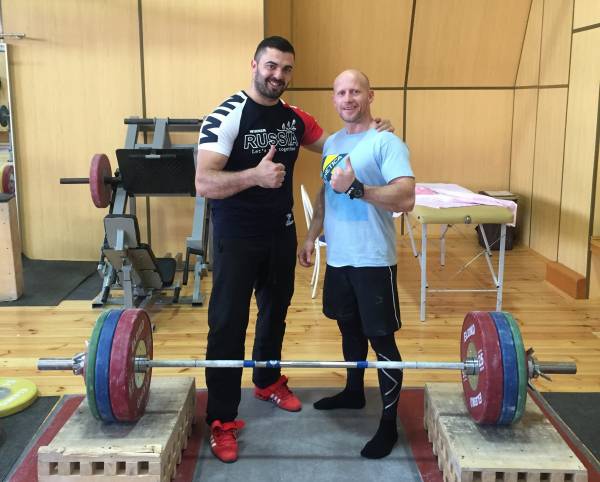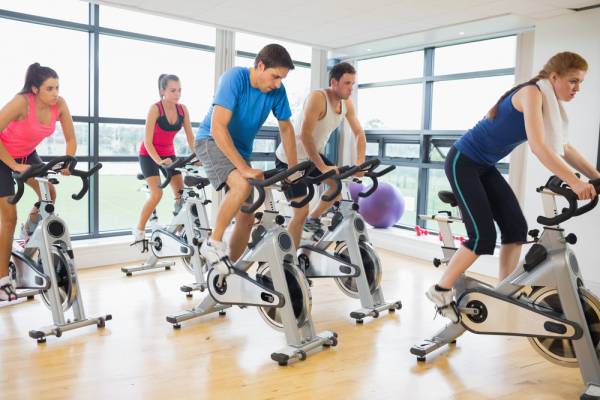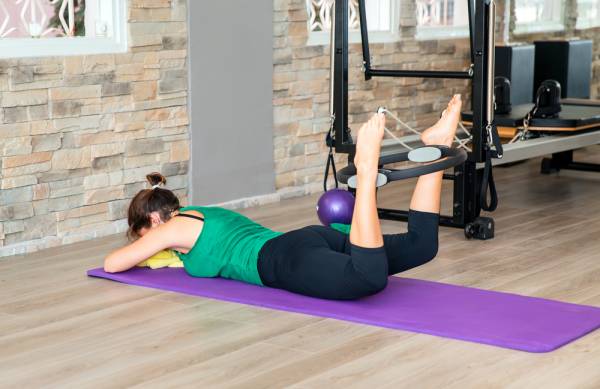This
post was originally published on
this sitehttp://www.marksdailyapple.com/
 The Primal Blueprint classically recommends against legume consumption, but that stance has softened. Legumes aren’t bad in and of themselves. Many people have intolerance issues with them, and unresolved gut barrier leakiness or FODMAP intolerances can make legumes a painful, often cacaphonous indulgence. But the category of legume itself is not a simple thing. Some legumes are better than others. Some people will tolerate one legume but not another. So where does soy fit in?
The Primal Blueprint classically recommends against legume consumption, but that stance has softened. Legumes aren’t bad in and of themselves. Many people have intolerance issues with them, and unresolved gut barrier leakiness or FODMAP intolerances can make legumes a painful, often cacaphonous indulgence. But the category of legume itself is not a simple thing. Some legumes are better than others. Some people will tolerate one legume but not another. So where does soy fit in?
Is Soy Bad for You?
Well, there are a lot of foods that fall under “soy.” There’s soybean oil, soy protein, soy milk. There’s natto, tempeh, soy sauce. There’s the whole young soybean steamed. There’s the dried soybean cooked like a common bean. Anyway, let’s get on with things and analyze all the soy products available.
Soybean Oil
Soybean oil might be the single biggest impediment to human health in the modern world. Over the past century, our consumption of soybean oil has skyrocketed and the proportion of linoleic acid in human body fat has also risen. Seeing as how the absolute amount of body fat has increased as well, we’re looking at a huge rise in absolute amounts of linoleic acid in the human body. Body fat isn’t inert. It’s a legitimate endocrine hormone, and the type of fat you store on your body can determine your hormonal output and metabolic health.
This rise in soybean oil-induced linoleic-rich body fat has paralleled the increases in obesity, diabetes, heart disease, and all the other degenerative maladies of modernity you see walking around in everyday life.
Soybean oil isn’t “meant” to be consumed because it wouldn’t even exist as a product without industrial extraction methods. You can’t press a soybean and get extra virgin soybean oil. You need solvents and industrial-scale equipment to make soybean oil. This alone is a good indicator that we should not be eating it. And then there are the studies that confirm we shouldn’t:
Soybean oil has low oxidative stability—heat damages it rather quickly and easily.
Soybean oil-based infant formulas are among the worst, producing poor metabolic and growth outcomes.
Soybean oil combined with dietary cholesterol damages the liver. Lard combined with dietary cholesterol does not.
The stuff is awful. Avoid.
Soy Protein
Soy protein powder has long been the go-to for plant-based lifters who want to increase their protein intake but can’t eat more animal protein to make it happen. If that’s your only option, fine: it’s better than not eating any extra protein. But if have no qualms about whey protein and you’re only choosing soy protein because it’s “healthier” or “better for the environment,” you’re making a big mistake.
- Compared to whey and other animal proteins, soy protein is simply not as effective at stimulating muscle protein synthesis.
- Post-workout skim milk beats soy protein drink for muscle protein synthesis.
- Skim milk leads to better lean mass gains than soy protein.
- Young men drinking whey protein after lifting weights make more gains than young men drinking soy protein after lifting weights.
- In dialysis patients looking to reduce lean mass loss, whey works better than soy.
One study in college aged men found that while milk protein enhanced hypertrophy in type 2 fast twitch fibers, soy protein enhanced hypertrophy in type 1 fibers. If you want to get “jacked,” type 2 fibers are what you want to grow.
Whey is simply whey better than soy protein.
Soy Milk
Believe it or not, of all the popular non-dairy milks out there, soy milk contains the most nutrients and is probably the closest to cow milk. It’s high in protein. It contains a nice balanced selection of minerals. A review comparing soy milk, coconut milk, almond milk, and rice milk to cow milk found that soy milk was the closest—mostly because it actually featured measurable nutrients.
A cup of soy milk
- 74 calories
- 3.6 g carbs; 2 g fiber
- 4 g fat
- 8 g protein
- All the usual additions, like calcium, vitamin B12, vitamin D, riboflavin, and vitamin A
- 10% magnesium
- 15% manganese
- 6% folate
- 6% potassium
- 19% copper
- 10% selenium
Looks good on paper and is certainly better than the other alternatives, which are pretty much just nut water. However, people who regularly drink soy milk tend to end up with micronutrient deficiencies possibly due to the phytic acid levels inhibiting mineral absorption. Another possibility is that the soy milk is causing leaky gut, which inhibits nutrient absorption. Kids who drink cow milk are less likely to have atopic eczema, while soy milk drinkers have no such protection (and may even have increased risk). The protein in soy milk can help people build muscle, but milk proteins work better and also provide other benefits to the immune system. Soy is also notorious for harmful farming practices and requires copious amounts of chemical sprays, which are harmful to the consumer and to the environment.
Fresh Soybeans (edamame)
Edamame are young soy beans, still in the pods. They are not eaten raw, but they don’t require a lot of cooking. A light steam (or run through the microwave, as sushi restaurants do) will sufficiently tenderize the little beans. These aren’t hardy, difficult-to-digest dried beans. They’re more like green peas or green beans, which I previously gave the stamp of approval.
The fatty acids in edamame are mostly monounsaturated (which we like), whereas soybean oil, as mentioned earlier, is mostly polyunsaturated linoleic acid (which we usually want to reduce).
Edamame actually have drastically lower levels of phytoestrogens than mature soybeans. One study found that the phytoestrogen content of edamame samples ranged from 0.02% to 0.12%, while mature soybean samples ranged from 0.16% to 0.25%. The gulf widens when you consider that edamame are a snack, eaten sparingly, while mature soybeans are usually converted into tofu, soymilk, and other products that people consume in large amounts.
I couldn’t find solid data on phytic acid levels in edamame, but that could be an indication of researchers’ utter lack of concern for the levels of phytic acid in edamame. I’d imagine that the phytic acid situation is much like the phytic acid situation in other young legumes like green peas and green beans: not very dire.
While I wouldn’t make it a regular part of my diet, edamame appears to be relatively benign as an occasional snack. Just don’t eat bucketfuls, don’t make it baby’s first food, and don’t get into edamame pancakes or some silliness like that.
Natto
Even though natto is soybeans, a legume with significant levels of phytoestrogens, phytic acid, and trypsin inhibitors, with a gross, slimy texture that may be outdone only by its interesting taste, it’s not what you think. By most accounts, people following a Primal lifestyle shouldn’t have anything to do with it. If you asked me ten years ago, I may have said that. But natto is a special kind of soy. It’s fermented using a particular strain of bacterium called Bacillus subtilis natto. When steamed soybeans are inoculated with b. subtilis, they are transformed from a basic legume with few redeeming qualities into a powerful supplemental food imbued with high levels of vitamin K2, a nutrient important in bone mineralization, cancer prevention, and protection from heart disease. The fermentation also makes it more digestible and reduces the phytic acid content.
Natto is great. Eat it. If you don’t like the taste, try eating it with soy sauce/tamari, black garlic, smoked oysters, sardines, a raw egg yolk, and maybe a little rice (or cauliflower rice).
Soy Sauce
Real soy sauce is naturally brewed/fermented. Look out for the acid-hydrolyzed soy protein sauce masquerading as real soy sauce.
I’ve gotten in trouble for this before, so I’ll make it clear this time: if you are celiac or have a sensitivity to gluten, choose tamari-style soy sauce (and make sure it says “gluten-free,” as some types of tamari just use less wheat than normal soy sauce). For the rest of us, I don’t think a few dabs of soy sauce will hurt. I’m normally quite sensitive to large doses of gluten—I can get away with a crust or two of bread with butter and that’s it—and regular soy sauce doesn’t bother me. But, again, if you have a negative response to soy sauce, use gluten-free tamari instead. Some research even shows that celiac patients can tolerate real fermented soy sauce, even the stuff that contains wheat.
A review found that soy sauce improves digestion by increasing gastric juice secretion (good, since we typically have it with food), inhibits microbial growth, contains an anti-hypertensive component, displays anti-cancer qualities, and has “shoyuflavones” with anti-inflammatory effects. Soy sauce also contains polysaccharides that may increase iron absorption and reduce the symptoms of hay fever. Real, fermented soy sauce has an antioxidant profile easily outclassing red wine, with one study finding that a single meal containing soy sauce reduced oxidative stress, lowered diastolic blood pressure, and inhibited lipid peroxidation in adults.
Soy sauce is good.
Soy Lecithin
Soy lecithin is simply the byproduct of soy oil extraction. It’s not hydrogenated soybean oil, folks allergic to soy can eat it without ill effect, and lecithin actually contains choline and phospholipids that can be quite beneficial for liver health. Don’t go out of your way to eat soy lecithin for any health benefits (egg yolks and liver are far better sources of choline), but don’t pass on some excellent dark chocolate simply because “soy” appears on the package.
For what it’s worth, high dose soy lecithin has been shown to increase vigor and improve blood pressure in post-menopausal women.
Soy lecithin isn’t anything to worry about.
What about some of the health effects of soy consumption?
Soy and Cancer
We’re talking mostly about breast cancer here. The culprit in question is the group of soy isoflavones, plant hormones that mimics estrogen in the body. Some research has shown that isolated isoflavones, a.k.a. phytoestrogens, contribute to the growth of tumors in the breast, endometrium and uterus.
It essentially comes back to the whole foods question. The research has focused on the isolated isoflavones, particularly genistein, the most active of the soy isoflavones that activates cellular estrogen receptors, including those in breast tumors. Noted experts in the field have cautioned that research with isolated soy compounds does not necessarily carry over well to the effect of the whole food, even minimally processed soy flour. In other words, soy is healthier than the sum of its parts. Other studies have shown that the mix of phytoestrogens in soy, when taken together in whole soy foods, protect estrogen receptors and may partly shield them from the estrogen we take in with meat and dairy consumption (yup, bovine hormones even in organic). They can also possibly reduce the impact of the unequivocally insidious “xenoestrogens” found in chemical pollutants.
Add to this picture the analysis of cultural diet and disease trends. Though Japanese women regularly eat significant portions of soy (in forms like tempeh, edamame, miso and tofu), they have only 1/5 of the breast cancer rate that Western women have. There are other differences, of course, but the fact remains that soy consumption doesn’t seem to be increasing the rate of breast cancer.
Soy and Thyroid Function
Researchers are in general agreement that people with previously diagnosed hypothyroidism (underactive thyroid) should not take soy supplements or make soy a large part of their diet. The isoflavones in soy inhibit thyroid peroxidase, which produces the thyroid hormones T3 and T4, which can make a bad situation worse for those with diagnosed hypothyroidism or can inhibit thyroid function in an otherwise healthy person.
In countries that do consume a lot of soy, they also tend to consume a lot of seaweed, which is rich in iodine and can counter the inhibitory effects on thyroid function. If you’re going to consume soybeans, make sure you consume seaweed or get plenty of iodine from other sources like shellfish and seafood.
Soy and Mineral Absorption
Soybeans are high in phytic acid, which is known to block the body’s absorption of minerals such as calcium, zinc magnesium and iron, just like grain-based diets have been shown to do. Fermentation is known to substantially reduce phytate levels, which is why you often hear that fermented soy forms are preferable—and it’s why most cultures who consumed soy as a staple food did so by fermenting it.
Soy and Testosterone
Although some recent reviews claim to have found “no effect,” one study found that 14 days of soy protein feeding was enough to suppress testosterone levels in young men.
And every case study I’ve ever run on the subject, by which I mean listening in on what people in line at the cafe are ordering and comparing their physiques, men who order soy milk lattes tend to have skinny fat bodies and burgeoning breasts.
What’s the Bottom Line on Soy?
Whole and fermented soy forms are clearly preferable. Personally, I wouldn’t bother with anything else. There are far better alternatives to most soy products:
Real milk beats soy milk.
Whey protein beats soy protein.
Avocado oil, olive oil, and animal fats beat soybean oil.
However, soy sauce/tamari is tough to replace. Luckily, it’s pretty inoffensive and may even be good for you.
Natto is impossible to replace. Best source of vitamin K2 on the planet.
Soy lecithin really helps smooth out high quality dark chocolate and is pretty benign.
I think there is something to the benefits of whole fermented soy, not as a staple but as a condiment or supplemental food, especially when combined with seaweed or another source of iodine. Nonetheless, you should all avoid soybean oil, soy protein, and any isolated concentrated “extract” of soy. And if you have any issues with testosterone, or you want to build yours to great heights, take it easy on the soy.
Kids shouldn’t eat large amounts of soy beyond some edamame at the sushi bar or some natto in their lunch plate.
Babies shouldn’t eat soy at all, especially not in formula form.
Above all else, soy isn’t necessary to be healthy, and a lot of it will probably lower your quality of life and general vigor. There may be genetic factors at work here, too, where populations with a long history of soy consumption can benefit more than people whose ancestry does not record much soy exposure. And even there, those people weren’t eating soy protein isolate and soybean oil.
What do you think of soy, folks? Do you eat it at all? If so, in what forms?
The post Is Soy Bad For You? appeared first on Mark’s Daily Apple.









 Research of the Week
Research of the Week
 Hello folks! Seasoned health coach and Primal Health Coach Institute Curriculum Director, Erin Power is back to answer all your questions about sleep, from why you’re waking up in the middle of the night to the best natural ways to improve your sleep cycle. Got more questions? Post them over in our
Hello folks! Seasoned health coach and Primal Health Coach Institute Curriculum Director, Erin Power is back to answer all your questions about sleep, from why you’re waking up in the middle of the night to the best natural ways to improve your sleep cycle. Got more questions? Post them over in our 
 The Primal Blueprint classically recommends against legume consumption, but that stance has softened.
The Primal Blueprint classically recommends against legume consumption, but that stance has softened. 
 As I discussed in a
As I discussed in a 

 Once everything is mixed together, separate the mixture into 6 balls.
Once everything is mixed together, separate the mixture into 6 balls.
 Brush half of the ketchup on top of each meatloaf.
Brush half of the ketchup on top of each meatloaf.





 We all love a good
We all love a good 
 For now classes are 6pm and 640pm at 2840 Wildwood st in the Boise Cloggers studio.
Book your class NOW!
click this ==>
For now classes are 6pm and 640pm at 2840 Wildwood st in the Boise Cloggers studio.
Book your class NOW!
click this ==>








